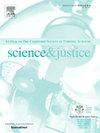加强法医鞋印分析:Shoe-MS算法在挑战证据中的应用
IF 1.9
4区 医学
Q2 MEDICINE, LEGAL
引用次数: 0
摘要
模式证据的定量评估是一项具有挑战性的任务,特别是在法医调查的背景下,准确识别证据来源和对证据物品进行分类是至关重要的。新兴的深度学习方法可以成为负责模式识别和分析的审查员的有用工具。本文探讨了Shoe-MS算法,这是一种专门为法医鞋类分析设计的基于深度学习的框架,其中输入由两个配对图像组成,输出是估计的相似度得分,其值在0到1之间。我们在两个不同的数据库上实现了Shoe-MS,这两个数据库允许评估算法在源识别和退化图像分类方面的性能。我们的实验结果表明,Shoe-MS算法在这两个任务中都实现了高性能,突出了其在法医鞋类分析方面的潜力。没有算法可以替代审查员,但是Shoe-MS产生可靠的相似性分数,并可以帮助审查员进行概率性、可再现性和可重复的评估。初步研究结果表明,Shoe-MS可以成为鉴定人评估模式证据的一种有价值的工具,尤其是在犯罪现场图像质量不高的情况下。本文章由计算机程序翻译,如有差异,请以英文原文为准。
Enhancing forensic shoeprint analysis: Application of the Shoe-MS algorithm to challenging evidence
Quantitative assessment of pattern evidence is a challenging task, particularly in the context of forensic investigations where the accurate identification of sources and classification of items in evidence are critical. Emerging deep learning approaches can become useful tools for examiners responsible for pattern recognition and analysis. This paper explores the Shoe-MS algorithm, a deep learning-based framework specifically designed for forensic footwear analysis where the input consists of two paired images, and the output is an estimated similarity score that takes on a value between zero and one. We implement Shoe-MS on two different databases that permit assessing the algorithm’s performance for source identification and for the classification of degraded images. Our experimental results demonstrate that the Shoe-MS algorithm achieves high performance across both tasks, highlighting its potential for forensic footwear analysis. No algorithm can substitute examiners, but Shoe-MS produces reliable similarity scores and can help examiners make probabilistic, reproducible, and repeatable assessments. Initial findings suggest that Shoe-MS can be a valuable tool for examiners evaluating pattern evidence, especially when crime scene images are not of the highest quality.
求助全文
通过发布文献求助,成功后即可免费获取论文全文。
去求助
来源期刊

Science & Justice
医学-病理学
CiteScore
4.20
自引率
15.80%
发文量
98
审稿时长
81 days
期刊介绍:
Science & Justice provides a forum to promote communication and publication of original articles, reviews and correspondence on subjects that spark debates within the Forensic Science Community and the criminal justice sector. The journal provides a medium whereby all aspects of applying science to legal proceedings can be debated and progressed. Science & Justice is published six times a year, and will be of interest primarily to practising forensic scientists and their colleagues in related fields. It is chiefly concerned with the publication of formal scientific papers, in keeping with its international learned status, but will not accept any article describing experimentation on animals which does not meet strict ethical standards.
Promote communication and informed debate within the Forensic Science Community and the criminal justice sector.
To promote the publication of learned and original research findings from all areas of the forensic sciences and by so doing to advance the profession.
To promote the publication of case based material by way of case reviews.
To promote the publication of conference proceedings which are of interest to the forensic science community.
To provide a medium whereby all aspects of applying science to legal proceedings can be debated and progressed.
To appeal to all those with an interest in the forensic sciences.
 求助内容:
求助内容: 应助结果提醒方式:
应助结果提醒方式:


